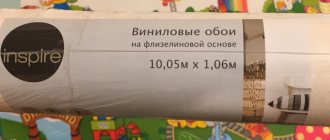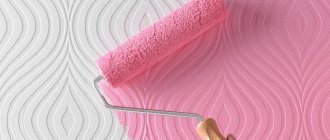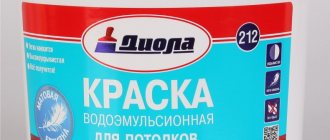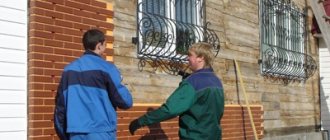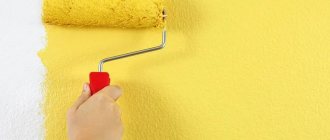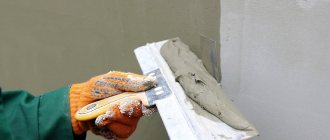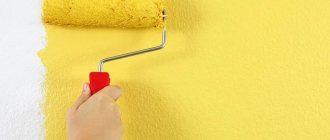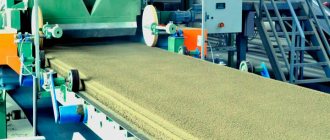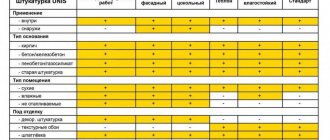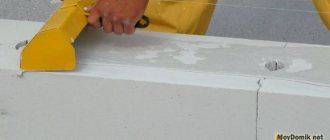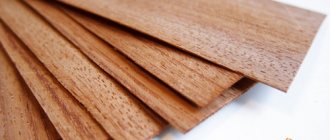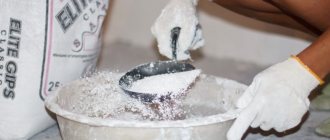Wall coverings with qualities such as strength and reliability are undoubtedly the most desired by any consumer and are very popular in the construction market. Hot stamping wallpaper , being a variety of a huge family of vinyl, they are especially loved by customers.
Types of hot stamping wallpaper
Among the many options for this coating, the following varieties can be distinguished.
- Silkscreen printing . This coating is quite thin, which is explained by a small layer of polyvinyl chloride. Silk-screen printing allows you to create a three-dimensional effect due to silk fabric and shimmer with sparkles. However, it is suitable for a room with perfectly smooth walls.
- Contact vinyl . The exact opposite of silk-screen printing - the vinyl layer is quite thick, which adds significant weight to the coating. Contact vinyl has a relief structure, thanks to which it can imitate brick, fabric, leather and other natural materials.
- Double layer vinyl (heavy vinyl) . Much denser than contact vinyl and has a pronounced pattern.
- Chemical embossing. A special agent, inhibitors, is applied to the vinyl layer along the outline of the pattern, resulting in the formation of a three-dimensional pattern on the wallpaper.
How to choose embossed wallpaper to match the interior of a room
Embossed wallpaper for the living room is very popular due to the wide variety of textures. With their help, you can transform any interior and create comfort in the room. The main rule: combine them harmoniously with other details, creating a complete picture.
When selecting embossed wallpaper, it is necessary to take into account the features of the room in which finishing is planned:
- if the room is dominated by artificial lighting, then it is better to stick to pastel shades;
- For large rooms, a large pattern is best suited;
- if you want to achieve an unusual effect, you can use embossed wallpaper to resemble stone, tile, brickwork or wood;
- Wallpaper combinations that can be used to perform zoning look interesting;
- by decorating one wall in a “patchwork” style - combining wallpapers of different textures and patterns, you can diversify the interior and give it freshness;
- embossing that imitates stone or marble will create the effect of a “free” room;
- For a harmonious combination of wallpaper with furniture upholstery, you need to select wallpaper with a metal or colored glass pattern.
Varieties
- Silkscreen printing. The thinnest variety of this wallpaper. It got its name due to the play of reflections that make the canvas very similar to silk.
- Compact vinyl. A denser variety, has a less pronounced pattern, for example, wood and brick. This material is very popular among designers for its variety of textures and colors.
- Heavy vinyl. It is a dense canvas with a pronounced pattern, which can hide the unevenness of the walls, but almost does not allow air to pass through and makes the material heavier.
- Chemical embossing. Before heat treatment, individual areas of the pattern are coated with special compounds that prevent the vinyl from expanding in volume, resulting in a very interesting effect.
Gluing technology
Scheme of the sequence of work on wallpapering the ceiling.
Hot-stamped wallpaper should be glued using the same technology that underlies gluing with conventional wallpaper. However, there are still certain features. So, it is not permissible to glue hot-stamped wallpaper by stretching it in width, otherwise you can get gaps between the joints after drying, since the material can stretch and shrink.
Before you start work, you should double-check that all purchased rolls belong to the same batch. Neither the color nor the design should be different.
In order to correctly determine the length of the strip, you need to add about 7 cm to the height of the room. The canvases are cut so that the pattern of adjacent sheets coincides, forming a single element of the pattern. Rolls should be unrolled in one direction, which is indicated on the label, and cutting should be done using 2 or 3 rolls at a time.
Wallpaper can be glued to almost any surface, including drywall, permanently old paint or plaster. If the walls are covered with old wallpaper, they should be thoroughly cleaned. It is recommended to treat cracks and holes using putty and plaster.
Before gluing wallpaper, you should prepare the adhesive mixture. It is recommended to purchase special glue designed for non-woven coatings. In the process of preparing the glue, you should follow the instructions.
The glue is applied directly to the base of the wall using a paint roller. The canvases should be coated so that there are not even small gaps left on them. You also have to make sure that the glue is not applied in too thick a layer. Afterwards, the canvas needs to be folded in half, which will help prevent drying out. In this state, the canvas should be left for about 10 minutes until it “swells.”
Afterwards, the panel must be straightened and glued to the surface.
At this stage, it is important to ensure that the canvas does not stretch. Each canvas should be pressed down with a stiff brush or clean rag.
In order to hide the seams, the first strip should be strengthened, starting from the window. The start of work must be accompanied by marking a vertical line using a plumb line or level. The first strip should be glued along the vertical markings. It is recommended to leave a small amount of wallpaper at the bottom and top, which will allow you to even out any unevenness. The next strip should be glued butt to the previous one. A soft brush or rubber-based roller will allow you to smooth the canvas; movements should be directed towards the edges from the middle.
In order to better glue the edges, it is recommended to apply the adhesive mixture in the places where they are connected, then the excess glue must be carefully removed. Until the wallpaper is completely dry, you should maintain a constant temperature in the room, avoiding drafts. If you are gluing wallpaper on problematic walls, you need to place a thin strip of paper under the joints, which will prevent the edges from lagging behind the base of the walls.
To decorate walls indoors, in most cases, different types of non-woven wallpaper are used. Hot stamping is one of the methods for producing wall coverings, which makes the non-woven material included in the material absolutely harmless. The manufacturing method involves heating the wallpaper, embossing the molten non-woven layer with a metal and then a rubber roller. During heating, substances harmful to humans evaporate, the material polymerizes, as a result of which formaldehyde resins can no longer evaporate.
3499 0 0
Hot-stamped vinyl wallpaper on a non-woven base is an elite roll covering. They come in several types. Let's talk about the advantages of each, consider the disadvantages and methods of application.
Sticking
For those who decide to update the interior with their own hands, you need to properly prepare for the work. Buy glue for non-woven or vinyl wallpaper. Remove the old coating from the walls and prime with a thin layer of glue.
Prepare glue in a large container (instructions on the box). Cut the wallpaper according to the height of the walls with an allowance of 3–5 cm. Carefully check the pattern matches.
On the wall, for the first sheet, a vertical line is drawn (by level). Now we coat the wall with glue and apply wallpaper.
Work should be carried out with the windows closed, in the absence of drafts. The temperature should be within +16…+23 °C. If the pattern is large, then it is more convenient to glue two people together to align the joints.
We apply non-woven wallpaper dry and fix it, smoothing it with a roller, brush, or rag. Paper wallpaper will have to be greased with glue and applied to the wall. At the bottom, cut off the excess fabric with a sharp knife.
The decorative value of vinyl embossing can hardly be overestimated
The next day after pasting, you can notice bubbles on the canvas. This defect can be easily eliminated. Take a syringe filled with glue, pierce it with a needle and inject a little glue under the canvas. Smooth it with a cloth, the air will come out and there will be no trace left of the bubble.
There may be glue at the joints - remove with a dry sponge/rag. Do not rub, but dab, removing excess. Never stretch the wallpaper wide - after drying it will come apart at the seams.
If you have heavy vinyl and don't know how to hang embossed duplex paper wallpaper, use the instructions above.
Wallpaper can be the main decorative factor
Pros and cons of non-woven wallpaper
The advantages of this wallpaper are truly a long list.
Advantages of non-woven wallpaper:
- When the house shrinks, such wallpaper does not deform;
- Wallpaper for painting can be repainted 6-7 times;
- To remove this wallpaper, you do not need to moisten it with water - it is already easy to remove (and how much time this saves);
- Low glue consumption, because you only need to coat the wall, and this also saves time;
- Non-woven wallpaper is breathable, because it has the ability to allow air and water to pass through, but if a vinyl layer is applied to the non-woven material, then these properties are lost;
- This wallpaper has high light resistance;
- They are not toxic;
- Non-woven wallpaper can be glued to any surface, plasterboard, concrete, wood, chipboard.
Pros rarely exist without cons, which, however, are few in number.
The main disadvantage of non-woven wallpaper is poor sound insulation
Disadvantages of non-woven wallpaper:
- Compared to paper ones, the cost of non-woven ones is significantly higher;
- They do not have high thermal insulation and sound insulation.
On average, the characteristics are not bad: they dry quickly, they are environmentally friendly, their service life is considerable with proper care, they are any width - if you want, take the standard ones, or if you want the meter ones. All you need is coating the walls with glue, and, of course, preparing the walls.
Some tips for choosing
Small drawing on paper base.
- You liked the silkscreen printing, that's not surprising. Many people, having seen the play of light on the walls and ceiling, their unique reflections and tints, decide to buy such a canvas. But there is one significant nuance here: the wallpaper is quite thin and relatively smooth and you need to create an almost ideal surface for it. Otherwise, any minor flaw will not only not be hidden, but, on the contrary, will appear even stronger.
- Also, the attractiveness of silk-screen printing very much depends on the level of illumination in the room. On the sunny side, where the rooms are flooded with natural light, a brighter and richer palette of hot-stamped wallpaper with a larger pattern is used. For artificial lighting, calm, light and warm colors with small ornaments are more suitable.
- Textured, heavy embossing in large rooms should have large sizes and streamlined shapes. For small rooms, a small, geometrically correct pattern is recommended.
- Don't limit yourself to using just one picture. So natural, large stone goes well with small slate. Geometrically correct brickwork, looks good against the background of natural wood. Old paint combines well with rough, textured plaster.
The video in this article shows the principle of covering walls with vinyl wallpaper.
Covering with deep relief.
Each coating is suitable for its type of premises. Likewise, hot stamping has its own preferences. It will look great in the living room, kitchen, office or office. But for a nursery or bedroom it is recommended to use more environmentally neutral and vapor-permeable wallpaper (see also the article “Wallpaper in the Art Nouveau style - new trends in a recognized style”).
Textured paintings in hot stamping.
Beautiful examples in the interior
Vinyl stylized wallpaper in the Art Nouveau style will help change your room after renovation.
Use wall coverings in soothing colors: beige, light blue, peach. Wallpaper for such an interior can be chosen with an intricate pattern or abstract.
In the Art Nouveau style it is permissible to use classic and retro elements. Wallpaper can replicate natural materials - stone, textiles, or be decorated with unusual decor. The sea and ships are perfect for emphasizing freedom and limitless space.
In a spacious living room, such a “marine” theme will look great, as, indeed, in the bedroom.
In a children's room, inflating sails on the wall are the most advantageous option. They can be combined with blue and white stripes.
For an overview of the Palitra wallpaper factory, see the following video.
Hot stamping wallpaper - the pros and cons of choosing
Wallpaper is the most popular material used to decorate the walls of premises. They come in a wide variety of colors and textures, have a fairly wide price range, and most importantly, do not require much effort in applying and maintaining. Every year newer and more interesting variations of this material appear on the market. Today, hot-stamping wallpaper is especially popular, the interest in which is only growing every day, which makes this material used among different groups of the population.
Option number 4. Wallpaper with chemical embossing
In the manufacture of wallpaper in this group, inhibition (chemical embossing) is used.
Their manufacturing technology is based on treating individual sections of the material coated with polyvinyl chloride with special reagents (inhibitors). These substances actively suppress vinyl foaming. Very often this material is used for finishing premises of public importance. When decorating residential premises, it is recommended to glue wallpaper with chemical embossing in the hallway, kitchen or corridor. This wallpaper is highly resistant to wear. They are almost immune to high humidity.
Features of embossed wallpaper on a non-woven base
The non-woven backing of embossed wallpaper is made up of cellulose fibers bonded together with a polymer. Non-woven fabric is durable, abrasion resistant and not as easily flammable as paper.
Often embossed non-woven wallpaper with vinyl coating is embossed wallpaper for painting. They withstand repeated painting, and the relief of the coating remains constant.
Embossed non-woven wallpaper has the following advantages:
- Possibility of masking small cracks and unevenness of the wall;
- Fire safety;
- Almost always, rolls of non-woven wallpaper have a large width, which simplifies and speeds up the process of gluing them;
- Easy to maintain - can be carried out with wet cleaning;
- Paintable wallpaper can be repainted a huge number of times;
- During the renovation, the vinyl layer can be separated from the interlining, and new wallpaper can be glued to the remaining base.
The disadvantages of embossed wallpaper on a non-woven base are the same as those of wallpaper with warm or inhibited embossing - high cost and an obstacle to ordinary air exchange.
What is the difference between non-woven wallpaper and vinyl wallpaper?
When choosing wallpaper, we pay attention exclusively to its color and density. To avoid disappointments in the process of using “clothes for walls”, it is necessary to understand the types of wallpaper and determine their visual differences
You don’t need to have any special knowledge to select simple paper wallpapers from the general variety. Their external design is usually unpretentious, and the quality leaves much to be desired. They are usually located in stores on separate shelves. They can be considered the most budget option for wall decoration.
Non-woven wallpaper should be distinguished from the general variety:
- This is a single-layer composition of fibrous cellulose.
- Non-woven fabric can also be used in the manufacture of clothing, so it is suitable as a natural material.
- The coating can be smooth or textured or in between.
- Visually they look like paper, but are highly durable and are essentially non-woven fabric.
- They cannot be washed to keep them clean; only vacuuming is permissible.
- Non-woven wallpaper easily allows air to pass through, thanks to this property mold does not form on the walls.
- Often used as a material for painting.
Vinyl wallpaper consists of 2 layers. The base can be paper, fabric or made of non-woven fabric. The second layer consists of vinyl. This synthetic material is better known as plastic. It is widely used in modern industry from the production of clothing and furniture to suspended ceilings, dishes and vinyl records. There are several types of decorative layers on vinyl wallpaper. Foamed vinyl coating is characterized by the presence of a deep relief pattern. The porous material is susceptible to dust accumulation. Allows easy wet cleaning and is not afraid of sunlight. This particular blade is very popular among pets and is ideal for sharpening claws.
The hard vinyl coating is very dense. Can imitate leather, suede or fabric surface. The material is wear-resistant and does not fade in the sun. Smooth vinyl has a rubberized structure and is not always smooth. The external design often resembles natural stone, brick, decorative plaster. The material is very moisture resistant, it can be washed or brushed using detergents.
Silk-screen printing is the most beautiful and expensive option of all listed. Produced by hot stamping. Very durable. A distinctive property is the surface, visually similar to silk threads.
Minuses
- They are afraid of children and animals. Due to the textured structure, this wallpaper can easily be damaged by mechanical force. The claws of cats and dogs, children's toys and bicycles are dangerous for them.
- Insufficient environmental friendliness. Although manufacturers claim that this type of wallpaper is harmless, a small amount of toxic substances are still released into the air. Therefore, you should not line children’s rooms and bedrooms with them. Also ventilate the premises more often.
- Vapor tightness. Vinyl does not allow air and moisture to pass through, which means it does not allow the walls to “breathe.” Because of this, mold can form between the wall and the wallpaper. Frequent ventilation of the premises is necessary.
- Price. Hot stamping wallpaper is more expensive than regular paper wallpaper. You can't call them a budget option.
Customers' opinions
Customers who managed to purchase hot-embossed wallpaper and used it in their apartments share their opinions about the product. 90% of all reviews are positive. Many users note that they did not find any flaws during use or gluing.
There are also negative reviews. Some people believe that hot stamping fabrics are easy to damage, especially during repairs. Customers also point out the following disadvantages: the need to treat the walls, heavy weight and high price for some models.
You can learn interesting facts about wallpaper production from the video below.
Advantages
Hot-stamped wallpaper for walls is a universal material suitable for use in any room, from home to formal office and commercial premises. They are able to adhere perfectly to any base, be it a concrete or plastered surface, wood, plasterboard or glass-magnesium sheets.
Moisture resistance is the next advantage. That is why hot wallpaper can be used in the kitchen, hallway, and other wet rooms. They are not afraid of not only moisture, but also steam and ultraviolet rays, which makes them one of the most practical wall coverings.
Antistatic reduces the frequency and intensity of cleaning. The coating can be wiped with a damp cloth, even using non-abrasive cleaning agents. This will not only not harm the coating, but will also update its appearance.
Thanks to its antistatic properties, the decorative surface is not able to accumulate static electricity emitted from household and computing devices.
Regardless of the base, that is, regardless of whether it is paper or hot-stamped vinyl wallpaper on a non-woven base, they are endowed with good heat-insulating qualities.
The thermal conductivity coefficient of the decorative coating is 0.15 W, which is comparable to a surface covered with plasterboard sheets. This means that it will be an excellent addition to the heat saving system.
Hot-stamped wallpaper in the interior can be perfectly combined with companion wallpaper of another type and with almost all finishing materials. Due to the widest range of products, choosing the right design, pattern or shade will not be difficult.
The variety of decors is so great that you can spend weeks before you can decide on the desired decor.
Working with vinyl wall coverings is similar to the process of covering surfaces with traditional canvases, so if you have free time, you can handle the work on your own.
Features and types
Embossed wallpaper is a product consisting of two layers. Their base may be different, but under the influence of high temperature and pressing, the top layer begins to foam. Undoubtedly, among ordinary users, hot-stamped wallpaper is the most popular. There are several varieties of such products.
Hot stamping vinyl wallpaper
They have recently appeared on sale, are of high quality, can be washed and allow you to create an original design in the room. We are pleased with the large assortment of colors and designs.
Composition: base made of paper or non-woven fabric. The paper version is cheaper, but has many disadvantages; the non-woven base is more expensive, but better in operation. The second layer is polyvinyl chloride. It forms the appearance of hot stamping products. The amount of vinyl depends on the design idea.
There are several options for producing such products:
- Silkscreen printing. This is a semblance of silk fabric, which is achieved through a special creation technology. A thin layer of polyvinyl chloride is applied to the base. Density ranges from 90 to 130 g/m2. At the same time, the texture of the products is not pronounced. The main feature is that the three-dimensional pattern is obtained not due to a thick layer of vinyl, but due to the refraction of light, if you look at hot stamping canvases from different angles. They shimmer and shine.
- Hot stamped vinyl. Another name for such wallpaper is heavy vinyl or contact vinyl. The peculiarity of the product is that it has a dense top layer reaching 250 gm/2. The canvas is heavily foamed, as is the pronounced relief on the surface. The products are heavy and very textured. Thanks to the simple method of making embossed wallpaper, it is possible to create an imitation of natural materials. The results are brick, concrete, plastered, woven or leather walls.
- Inhibitors. This is another option for applying a layer of vinyl to the surface. It comes down to the reaction of the canvas to chemical reagents. Inhibitors are applied to the vinyl base, depending on the selected pattern. This will prevent the vinyl from foaming in these areas. So inhibitors will allow you to create a certain pattern on the surface. The material has high strength, resistance to UV rays, and the canvas is not afraid of moisture. The surface is smooth, glossy.
Non-woven base
The vinyl layer is applied to a non-woven base. This is a durable, reliable and high-quality material that has many advantages. And despite the fact that such wallpaper is a little heavier and more expensive than paper wallpaper, hot stamped products will last many times longer.
Advantages of non-woven base:
- Safety and environmental friendliness. The material is not harmful to health and is hypoallergenic. Often such options are chosen for rooms with children or if a pet lives in the house.
- The ability to “breathe”. The material is breathable, which is a huge advantage. An optimal microclimate is created inside; the walls will not become covered with condensation or become damp. As a result, no fungus or mold. Natural ventilation in the room.
- Form. Non-woven fabric allows hot stamping fabrics to perfectly retain their original shape many years after installation. High-quality trellises will last for ten years without deformation or loss of color.
- Variety of designs. There are a lot of possibilities for decorating a room with wallpaper. These are not only colors, but also texture, patterns and designs on the surface. Products can be repainted.
- Able to mask minor defects on the surface.
- Universal type. The material is not only easy to work with, it is used for a variety of surfaces, be it concrete walls, plasterboard or brick. It is even possible to work with chipboard surfaces.
- Easy to dismantle. Hot stamping wallpaper does not need to be soaked or steamed. It is enough to pick up the trellis with a spatula and remove it.
Secrets of the popularity of hot stamping
- In terms of durability, such a material can only compete with fiberglass. Manufacturers provide a guarantee for paper sheets for up to 7 years, for non-woven fabrics for up to 15. Such lining is more likely to become obsolete than to become unusable.
- Walls covered with this coating can be safely washed with a regular sponge and household detergents. An important advantage here is the high resistance to direct sunlight and good tolerance of high temperatures, for example from household radiators.
- Such wallpapers are quite accessible for DIY installation; they have high adhesion rates, do not stretch and fit on most traditional surfaces without any problems. They adhere firmly to plaster, concrete or wood.
Floral motifs with deep texture.
Advice: before gluing smooth, glossy surfaces, such as smooth concrete, ceramic tiles or stubborn paint. It is better to treat the base with concrete-contact primer. This is especially true for heavy canvases.
- Heavy vinyl wallpaper with a deep texture can successfully hide minor defects or cracks in the base.
- Polyvinyl chloride has a foamed fine-pored soft structure, thanks to which it is a good heat and sound insulator. Thus, the thermal conductivity of this canvas fluctuates within 0.16 W, which is quite consistent with the data for such a coating as drywall.
- Many manufacturers claim that the process of hot stamping of polyvinyl chloride burns off formaldehyde, which is hazardous to health. We will not claim that this is the pure truth and will leave such assurances to the conscience of the manufacturers.
- As for the cost, the price for paper-based silk-screen printing starts at 400 rubles per roll, deep embossing and inhibited vinyl is already estimated at 550 or more. Non-woven wallpaper with hot stamping is considered to be of higher quality and will cost 15–20% more.
Is everything so good
- As you know, 100% universal materials do not exist; hot stamping vinyl also has some disadvantages. This paper-based coating practically does not allow air to pass through. As a result, the room requires more intensive ventilation.
- For the same reason, covering damp walls with such a cloth is highly not recommended, since moisture will be trapped in the wall and fungi and mold will begin to develop under the coating.
Important: non-woven fabric is a thinner material that has better vapor permeability compared to paper. But in any case, even under such a coating it is advisable to apply a primer that has an antiseptic and antifungal effect; sometimes this function can be performed by a special glue.
Large pattern on non-woven base.
- Thick fabric, deeply embossed, pleasant and soft to the touch. But precisely for this reason it has very low mechanical stability. If there is an active child growing up in the house, and especially when there are pets, such cladding will not last long.
Vinyl coating production technology
Vinyl is just a simplified common name; in fact, this material is known among professionals as polyvinyl chloride. The wallpaper canvas itself has a two-component structure; the base is paper or non-woven fabric. The top is covered with polyvinyl chloride.
Thus, this technology successfully combines 2 different types of wallpaper, paper and non-woven.
Accordingly, on a different basis, the operational characteristics will be different, but first things first:
- From an engineering point of view, the production technology is not very complicated, although of course it is not possible to make such a canvas with your own hands in artisanal conditions.
- Initially, a layer of polyvinyl chloride is applied to the base, then moving along the conveyor, the canvas enters a special high-temperature chamber, where the material is heated to a plastic state. After which the surface is compressed with several types of textured rollers and cooled. This is the general principle of production.
Non-woven wallpaper in the apartment.
Most common types
- Many people have paid attention to the silk-like coating, but not many people know that this same silk-screen printing is produced using hot stamping technology. The emphasis here is no longer on textured relief and colors, but on a special coating that has luminescent qualities. As a result, when light hits such wallpaper, it is reflected at different angles, playing with unique, unique edges.
- When compared with other types of vinyl, silk-screen printing is the thinnest. The textured pattern here is very faintly visible, but still it is very similar to real silk.
- Compact vinyl can boast the greatest thickness. This material is considered perhaps the most common. Such wallpaper is also called heavy because of its embossed, deep texture and impressive weight.
- The palette of hot-stamped compact vinyl wallpaper contains dozens of colors and hundreds of shades; it is the richest. The texture can be chosen to suit every taste, from brick, wood or wild stone. Up to exotic types of leather or relief plaster.
- Inhibited vinyl is a type of treatment rather than a type in its own right. The fact is that the instructions for the production of such a canvas are reminiscent of the technology for producing “compact vinyl”, but here, in addition to mechanical and temperature treatment, there is also a special chemical embossing. Thanks to which the coating acquires unique performance characteristics. The price of such wallpaper is one of the highest.
Abstract silkscreen printing.
Selecting Hot Stamping Material
In the production of hot-stamped wallpaper, polyvinyl chloride is foamed at high temperatures in a special chamber. Then applied to the base. Hot stamping produces 3 types of materials :
- Silkscreen printing . A thin layer of polyvinyl chloride is applied to the base. Due to the texture and painting, the outer layer imitates the surface of silk fabric. These are the thinnest and smoothest of embossed coatings.
- Contact vinyl . The top layer is very foamy and convex. The surface often imitates textured plaster.
- Flat or compact vinyl. The top layer is very dense, its appearance imitates natural materials:
- stone;
- brickwork;
- wooden panels.
- Silk-screen wallpaper looks beautiful and impressive . Usually stores have a wide selection of colors. They have a dense wear-resistant coating. Screen printing is well suited for living rooms and dining rooms.
- Due to its porous structure, contact vinyl has good soundproofing properties . If you have noisy neighbors, or you don't want your noise to disturb anyone, this material will solve these issues.
- Due to its wear-resistant coating and design, compact vinyl is good for hallways . It can be used for decorative decoration of living rooms.
A little about the production process
In the production of vinyl wallpaper, the embossing procedure has brought, one can safely say, a revolutionary revolution.
First, let's figure out what hot stamping is. This is the process of finishing a material, during which the intended design is applied to it by heating to a high temperature.
The reel of non-woven material is placed on the printing tape, a base layer of vinyl is applied and heated. After this, all the planned colors are applied in turn using intaglio printing rollers. Then the canvas is heated again and passes under a special hot embossing roller. Thanks to this, the surface becomes dense and resistant to mechanical damage.
The embossing roller creates a certain relief on the surface of the canvas. It may or may not match the picture. Depending on this, printing is divided into:
- not registered. The relief is on top of the design and does not highlight it.
- register More labor-intensive and expensive, the design coincides with the boundaries of the embossing. This is achieved by complicating the process of engraving oxen. Simple designs are laser engraved. More complex ones are performed by master engravers.
Comparison of two groups of embossed wallpaper
The technical characteristics of thick embossed wallpaper are based on the base used (non-woven fabric and paper). This is a major factor affecting price, quality and durability. Let's look at each category.
Nonwoven
Let's consider the advantages of roll sheets and the existing disadvantages.
New embossing technologies make wallpaper extraordinarily beautiful
Pros:
- Safety. This wallpaper is absolutely safe for humans. They do not contain harmful substances and are recommended for all types of rooms, including bedrooms. Indispensable in apartments with children and allergy sufferers.
- The “breathability” of the coating has been proven . They allow air to pass through and eliminate the possibility of mold and mildew.
- Quality . Thanks to its composition, the material does not deform after application and retains its color saturation for many years.
- Design. The variety of textures, patterns and palettes attract attention. Non-woven wallpaper can decorate any interior and hide defects on complex surfaces (except for silk-screen printing).
Silkscreen printing impresses with the play of color
- Decorating possibilities . Many types can be painted. Under the influence of paint, the base does not change, but the structure becomes denser.
- Versatility. Wallpaper with embossing is suitable for walls made of plasterboard, chipboard, wood and concrete.
- Dismantling. No soaking or scraping required. The canvas is easily separated from any surface.
- Quick installation (roll width is one meter).
- Long service life - 9–12 years.
Vinyl embossing offers a large selection of designs
Minuses:
The number of strengths can be compared with the only disadvantage. Vinyl wallpaper that does not have additional coating (varnish, paint) cannot be washed. Dry cleaning with a vacuum cleaner is acceptable.
Non-woven wallpaper is much more expensive than paper wallpaper. To save money, it is recommended to use a small pattern in large rooms. Otherwise, each roll will take 1–2 meters to pick up.
Non-woven base is moisture resistant - used in the bathroom
Paper
Paper-based embossed vinyl has its strengths and weaknesses. In general, this group loses to non-woven ones. Heavy vinyl (duplex) is considered the highest quality.
Advantages:
- Minor camouflage effect (small cracks, roughness).
- Contribute to the creation of a favorable microclimate.
- Environmentally friendly.
- Not exposed to UV rays.
- Low price.
Flaws:
- Can't be washed.
- Cannot be used in damp areas.
- Low resistance to stains.
- With increased parking, mold/fungus appears on the paper.
- Difficult installation - you need to apply glue to the canvas and the wall. There are a lot of seams, since the rolls are 53 cm long.
- Short service life - 5 years.
Non-woven base
Such wallpapers also have positive and negative sides.
pros
Based on customer reviews and expert opinions, a list of the advantages of hot-stamped wallpaper on a non-woven basis was compiled.
Let's look at the main advantages:
- Safety. This option is environmentally friendly and completely safe for health. Such wallpaper can be used to decorate houses where allergy sufferers, small children or pets live.
- "Breathable" fabrics. Professionals from the field of decorating residential premises note that the finishing material is highly breathable, which reduces the likelihood of mold forming on the canvas and other unpleasant consequences.
- Form. Wallpaper retains its shape remarkably well for many years after installation. High-quality canvases will serve for a long time, without deformation and attract attention with their rich color.
- Design. This finishing material provides enormous opportunities for decorating rooms. The varied palette and texture are pleasantly surprising, and the affordable price makes the material accessible to most buyers.
- Possibilities for decoration. Hot stamping fabrics can be used as a base for painting. Paint treatment will not affect the integrity of the finishing material, and the structure will be compacted.
- Versatility. Non-woven fabrics can be safely used for gluing various surfaces. They are perfect for wooden, plasterboard or concrete walls. They can also be used to decorate chipboard walls.
- Dismantling. If you want to update the room, the process of removing old wallpaper will not take much time. The fabric should not be soaked or treated with steam. To remove the old coating, use a regular spatula.
Flaws
Despite a number of advantages, the finishing also has a drawback, although it is not inherent in all canvases.
Regular non-woven fabric without additional coatings and enamel (paints) cannot be washed. The cleaning process can severely damage the product. It is recommended to use only surface treatment with a conventional vacuum cleaner.
